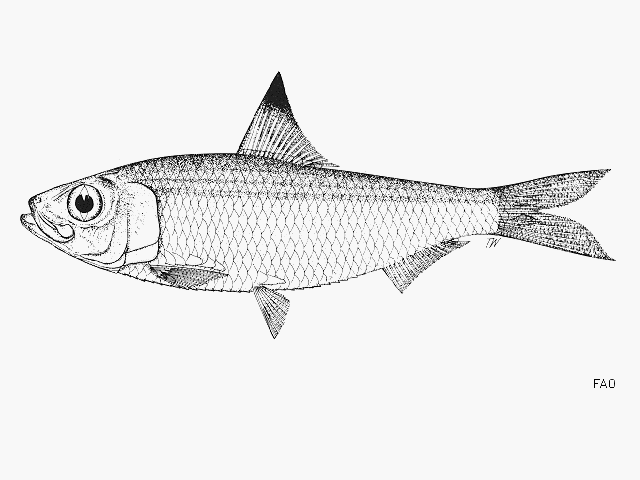| Dorosomatidae (Gizzard shads and sardinellas) |
| 11.5 cm SL (male/unsexed) |
|
pelagic-neritic; brackish; marine; depth range 0 - 50 m |
| Western Pacific: Papua New Guinea and Fiji. Reported from New Caledonia (Ref. 11889). |
|
Dorsal spines (total): 0-0; Dorsal soft rays (total): 13-21; Anal spines: 0-0; Anal soft rays: 12-23. Total scutes 29 or 30; lower gill rakers slender, smooth and numerous. No perforations on hind part of scale. Tips of dorsal and caudal fins dusky or black. Immediately distinguished from all other Sardinella species in the area by its high gill raker count, also the overlapping or continuous scale striae and absence of dorsal spot. |
| Forms schools in coastal waters. Euryhaline (Ref. 12743). Used as bait in the tuna fishery. Used in Chinese medicine (Ref. 12166). |
|
Least Concern (LC); Date assessed: 14 October 2019 Ref. (130435)
|
| harmless |
Source and more info: www.fishbase.org. For personal, classroom, and other internal use only. Not for publication.

